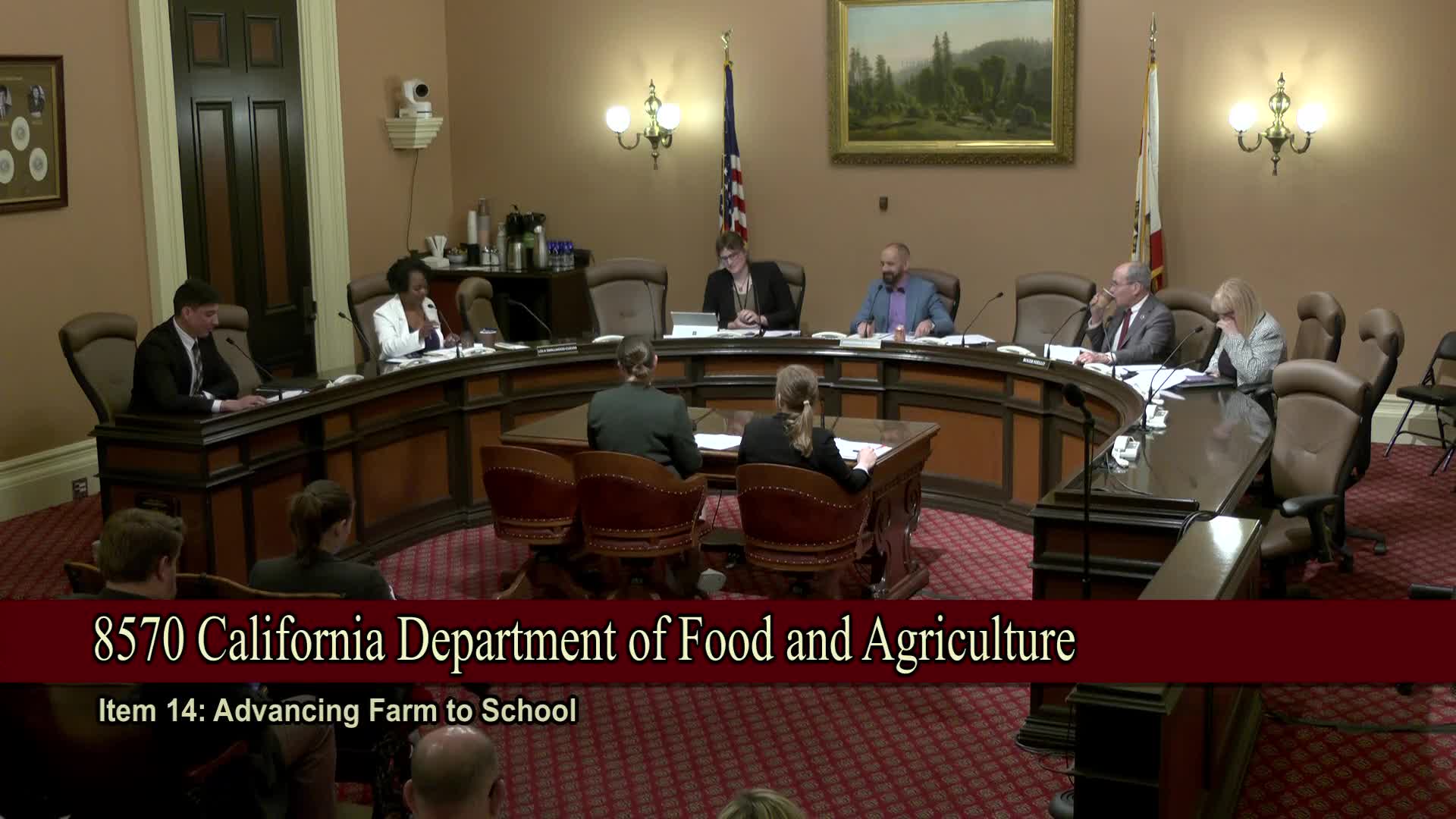California Farm to School Program expands access to fresh food in urban districts
May 01, 2025 | California State Senate, Senate, Legislative, California
This article was created by AI summarizing key points discussed. AI makes mistakes, so for full details and context, please refer to the video of the full meeting. Please report any errors so we can fix them. Report an error »

In a recent meeting of the Senate Budget and Fiscal Review Subcommittee No. 4, discussions centered around the critical role of the Farm to School program in California, particularly its impact on urban campuses and food accessibility for students. The atmosphere was charged with a sense of urgency as committee members explored the complexities of food supply chains and the importance of fresh produce in schools.
One key point raised was the alarming lack of fresh foods available in many schools, where meals often represent the only nutrition students receive. A committee member emphasized the need to understand where food comes from, questioning how tomatoes and other produce make their way to grocery stores and, ultimately, to students' plates. This inquiry highlighted the importance of connecting students with local farmers and educating them about the food supply chain.
The California Farm to School Network has made strides in addressing these issues, having hired 16 regional leads to support schools in accessing fresh, locally sourced foods. Currently, the program reaches nearly half of California's school children, though the distribution of benefits is not uniform across the state. The committee acknowledged the need for equitable access to nutritious food, particularly in underserved communities.
Rachel O'Brien, Deputy Secretary of Legislative Affairs, shared impressive statistics: 80% of schools served by the program are Title 1 schools, and a significant portion of food producers involved are small to mid-sized operations. The program also emphasizes climate-smart agricultural practices, with many grantees committed to procuring minimally processed foods from local producers.
As the conversation unfolded, the committee recognized the importance of diversity among farmers participating in the program. Ensuring that students see themselves reflected in the agricultural community is vital for fostering a connection to the land and understanding the origins of their food. The discussion also touched on the challenges faced by new farmers entering the field, emphasizing the need for support systems that go beyond traditional generational farming practices.
The meeting concluded with a commitment to follow up on specific questions regarding the demographics of participating farmers and the impact of the program in urban areas like Los Angeles. As the committee members left, the importance of the Farm to School initiative lingered in the air, a reminder of the ongoing efforts to bridge the gap between local agriculture and school nutrition, ensuring that all students have access to healthy, fresh food.
One key point raised was the alarming lack of fresh foods available in many schools, where meals often represent the only nutrition students receive. A committee member emphasized the need to understand where food comes from, questioning how tomatoes and other produce make their way to grocery stores and, ultimately, to students' plates. This inquiry highlighted the importance of connecting students with local farmers and educating them about the food supply chain.
The California Farm to School Network has made strides in addressing these issues, having hired 16 regional leads to support schools in accessing fresh, locally sourced foods. Currently, the program reaches nearly half of California's school children, though the distribution of benefits is not uniform across the state. The committee acknowledged the need for equitable access to nutritious food, particularly in underserved communities.
Rachel O'Brien, Deputy Secretary of Legislative Affairs, shared impressive statistics: 80% of schools served by the program are Title 1 schools, and a significant portion of food producers involved are small to mid-sized operations. The program also emphasizes climate-smart agricultural practices, with many grantees committed to procuring minimally processed foods from local producers.
As the conversation unfolded, the committee recognized the importance of diversity among farmers participating in the program. Ensuring that students see themselves reflected in the agricultural community is vital for fostering a connection to the land and understanding the origins of their food. The discussion also touched on the challenges faced by new farmers entering the field, emphasizing the need for support systems that go beyond traditional generational farming practices.
The meeting concluded with a commitment to follow up on specific questions regarding the demographics of participating farmers and the impact of the program in urban areas like Los Angeles. As the committee members left, the importance of the Farm to School initiative lingered in the air, a reminder of the ongoing efforts to bridge the gap between local agriculture and school nutrition, ensuring that all students have access to healthy, fresh food.
View full meeting
This article is based on a recent meeting—watch the full video and explore the complete transcript for deeper insights into the discussion.
View full meeting
